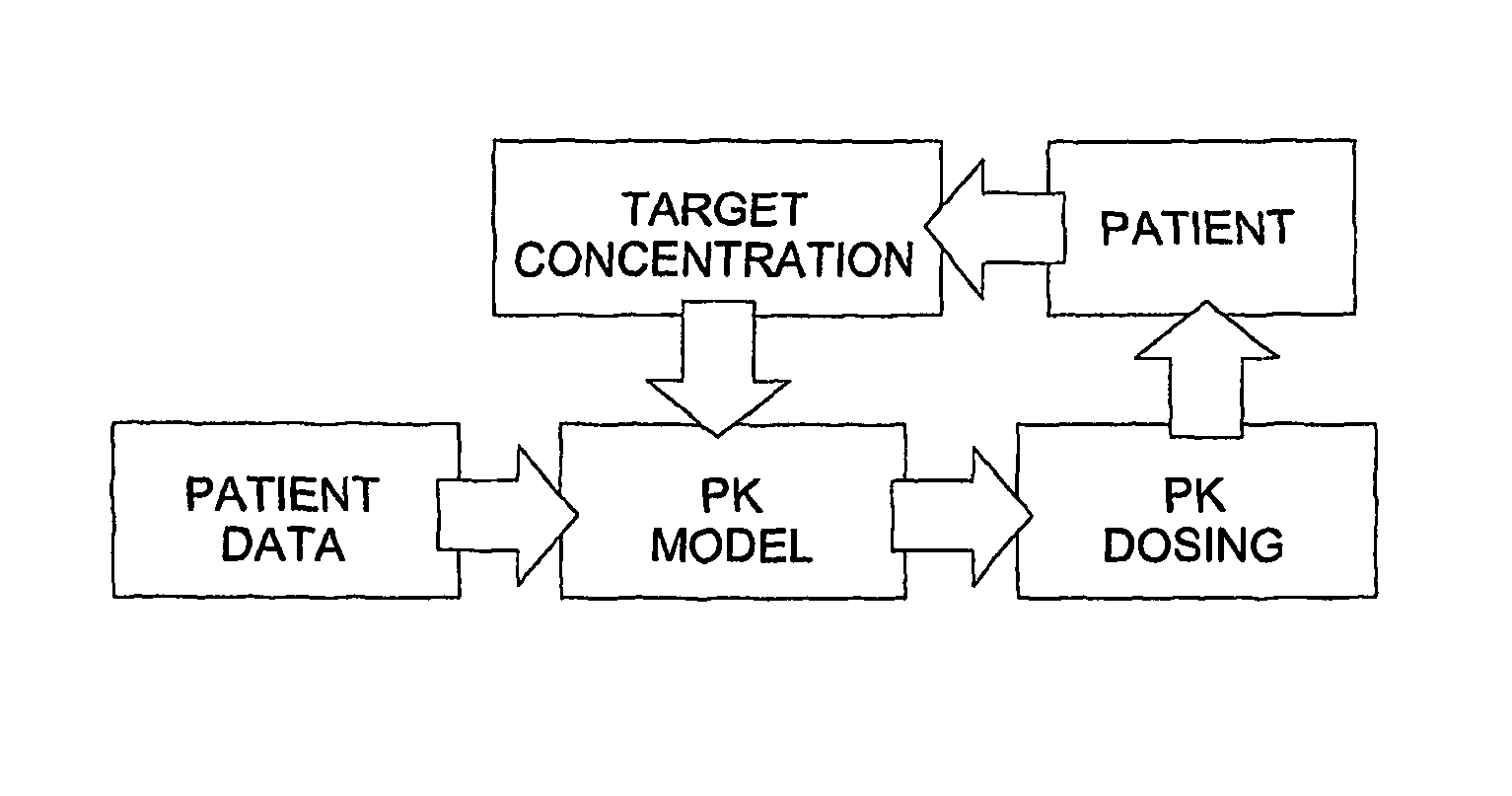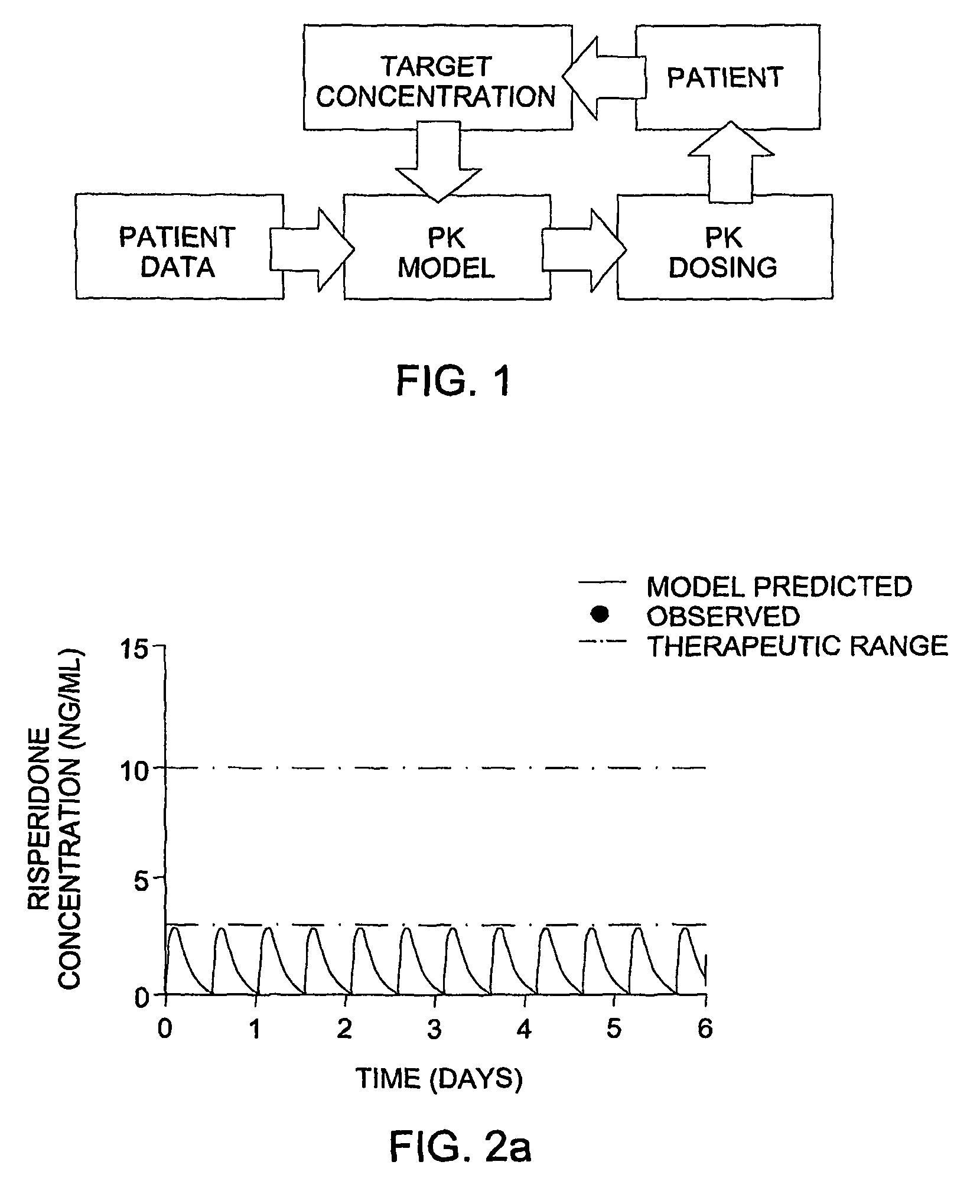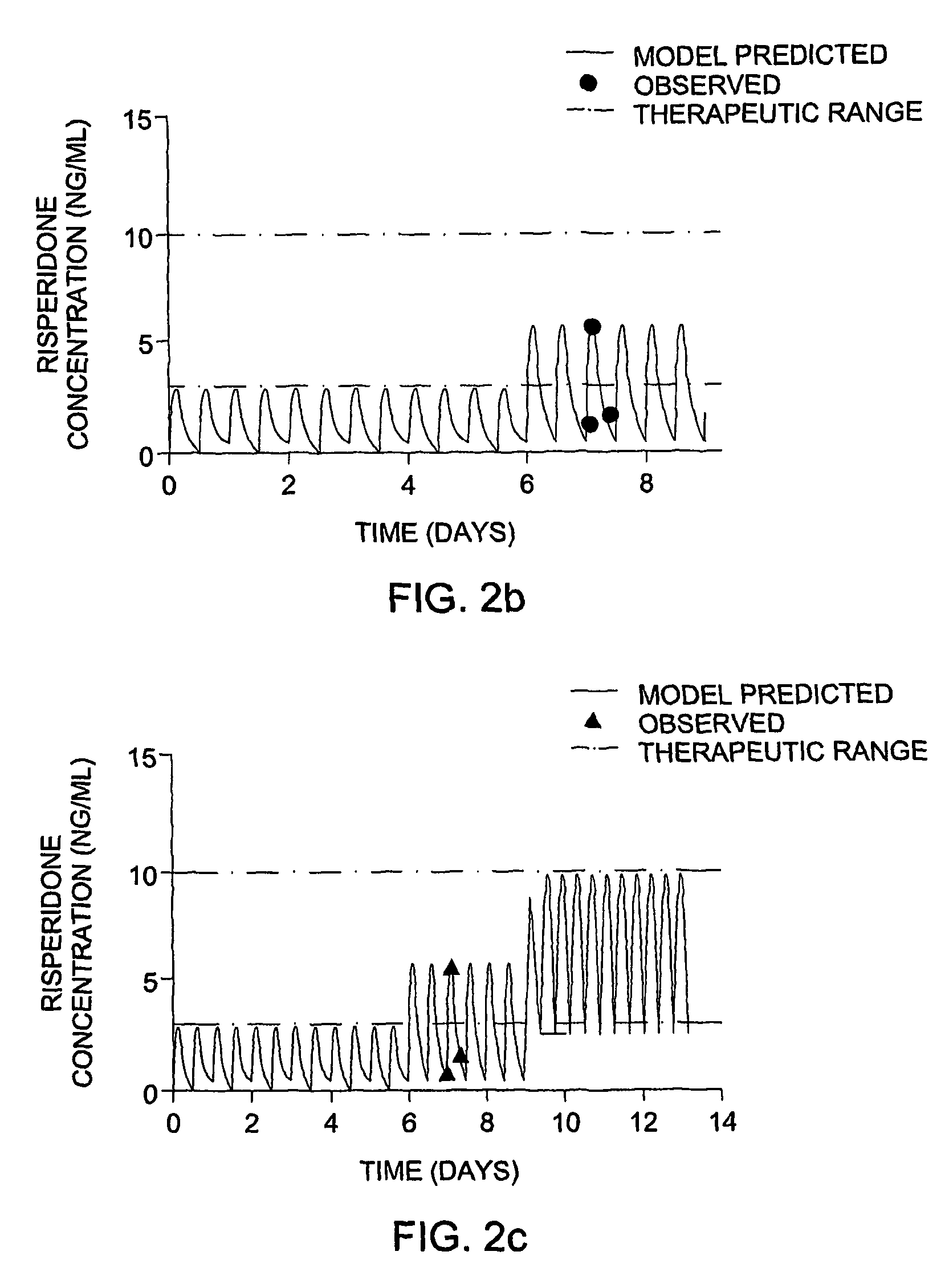Optimization and individualization of medication selection and dosing
a medication selection and individualization technology, applied in the field of optimization and individualization of medication selection and dosing, can solve the problems of limited defining drug action and inter-patient variability, inability to describe, understand, and quantify the important mechanistic relationship, and the frequency of sample mean and sample standard deviation is greater than expected, so as to facilitate the implementation of recommendations and understand the
- Summary
- Abstract
- Description
- Claims
- Application Information
AI Technical Summary
Benefits of technology
Problems solved by technology
Method used
Image
Examples
example 1
Optimization of Compound Dosage in an Autistic Patient
[0120]An 11-year-old boy with autism was started on risperidone (Risperdal®) therapy, at 0.5 mg two times a day. The patient's pressured speech and labile mood did not improve with time. The lack of efficacy could be due to insufficient coverage or to non-compliance. The patient's dosing regimen was analyzed by the methods of this invention.
[0121]Step 1 Dose Appropriateness Analysis.
[0122]The patient demographic data (age, sex, weight) and the risperidone dose and times of administration were entered into the program. A population model was selected. The population model selected was a Risperidone model based on data of pediatric psychiatry patients. As risperidone is metabolized by CYP2D6, there are 3 models: one for extensive metabolizers (EM model), one for intermediate metabolizers (IM model) and one for poor metabolizers (PM model).
[0123]The genotype of the patient was determined and found to be CYP2D6 *1 / *1. This genotype f...
PUM
| Property | Measurement | Unit |
|---|---|---|
| concentration | aaaaa | aaaaa |
| concentration | aaaaa | aaaaa |
| concentration | aaaaa | aaaaa |
Abstract
Description
Claims
Application Information
 Login to View More
Login to View More - R&D
- Intellectual Property
- Life Sciences
- Materials
- Tech Scout
- Unparalleled Data Quality
- Higher Quality Content
- 60% Fewer Hallucinations
Browse by: Latest US Patents, China's latest patents, Technical Efficacy Thesaurus, Application Domain, Technology Topic, Popular Technical Reports.
© 2025 PatSnap. All rights reserved.Legal|Privacy policy|Modern Slavery Act Transparency Statement|Sitemap|About US| Contact US: help@patsnap.com



